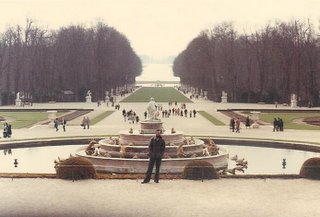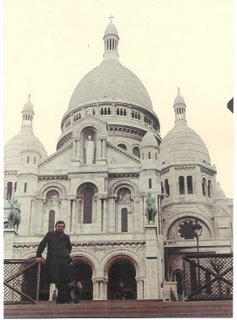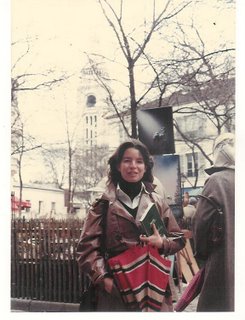
"ST. GERMAIN-EN-LAYE - The present palace dates from the 16th and 17th centuries, although a royal one had existed here since the 12th century. Louis XIV was born here, and it was here that his father, Louis XIII, died. Until 1682, when the court moved to Versailles, it remained the country's foremost royal residence outside of Paris. It seems that it was here that the exiled English king James II spent his last years"

"ST. GERMAIN-EN-LAYE - Preparing for the journey"

"VERSAILLES - In 1668, King Louis XIV decided to build a new palace outside Paris. The goal was to be farther away from the rebellious people in Paris, to be closer to the hunting forests west of Paris and to materialize his new absolute power as king of France. The largest in Europe, the palace housed 20 000 nobles and was the center of the French monarchy until the 1789 revolution"

"PÈRE LACHAISE - The Cimetière du Père-Lachaise is the largest cemetery in Paris, and one of the most famous cemeteries in the world. Located in the 20th arrondissement, Père-Lachaise is reputed to be the most visited cemetery in the world, attracting hundreds of thousands of visitors a year to the graves of the those who have enhanced French life over the past 200 years. The name of the cemetery comes from Père François de la Chaise (1624-1709), who was the confessor of Louis XIV"

"LE MUR DES FÉDÉRÉS - The Communards'Wall. This is the wall against which 147 Communards, the leaders of the Paris Commune, were shot on May 28, 1871 after the fall of the Commune"

"PÈRE LACHAISE is also the location of five Great War memorials, including the one for Sachsenhausen. There are several sites on the cemetery, but the Virtual Tour is really incredible!"

"SACRÉ-COEUR - Sacré Coeur is a modern church at the top of the Montmartre hill started in 1870 and completed in 1914. It is best known for its white pastry like domes which grace the Paris skyline"

"PLACE DU TERTRE - Montmartre was a little village on the outskirts of Paris until it was discovered by artists in the nineteenth century. Many famous painters lived and worked here - Van Gogh, Lautrec, Seurat, Monet - where they enjoyed the quality of light, out of the smoke, grime and noise. The Place du Tertre is still the haunt of artists, who provide the tourist market with souvenirs. It is also reputed to be the place in Paris where you are most likely to have your pocket picked..."


"THE CITÉ UNIVERSITAIRE - This «city» was begun in 1920, and the central «home» consists of seven buildings. The main rule is that everybody has to be a registered student at the University of Paris. About five to 6,000 students from over 100 countries are in residence from the beginning of October until the end of June"

"LA DEFENSE - The name derives from the monument «la Défense de Paris», erected in 1883 to commemorate the 1870 war. In 1951 the site was chosen as a modern office center, but the height of the towers (particularly the GAN - 200m), caused a public outcry. It's unique since the whole concrete slab on which the mini city is built is a car-free zone: roads, parking and subway links are all underground. The main axis of La Défense lines up with the Pyramid in the Louvre, the Obelisk at Concorde, and the Arc de Triomphe at Etoile. The Grande Arche was built at La Defense's western end"
No comments:
Post a Comment